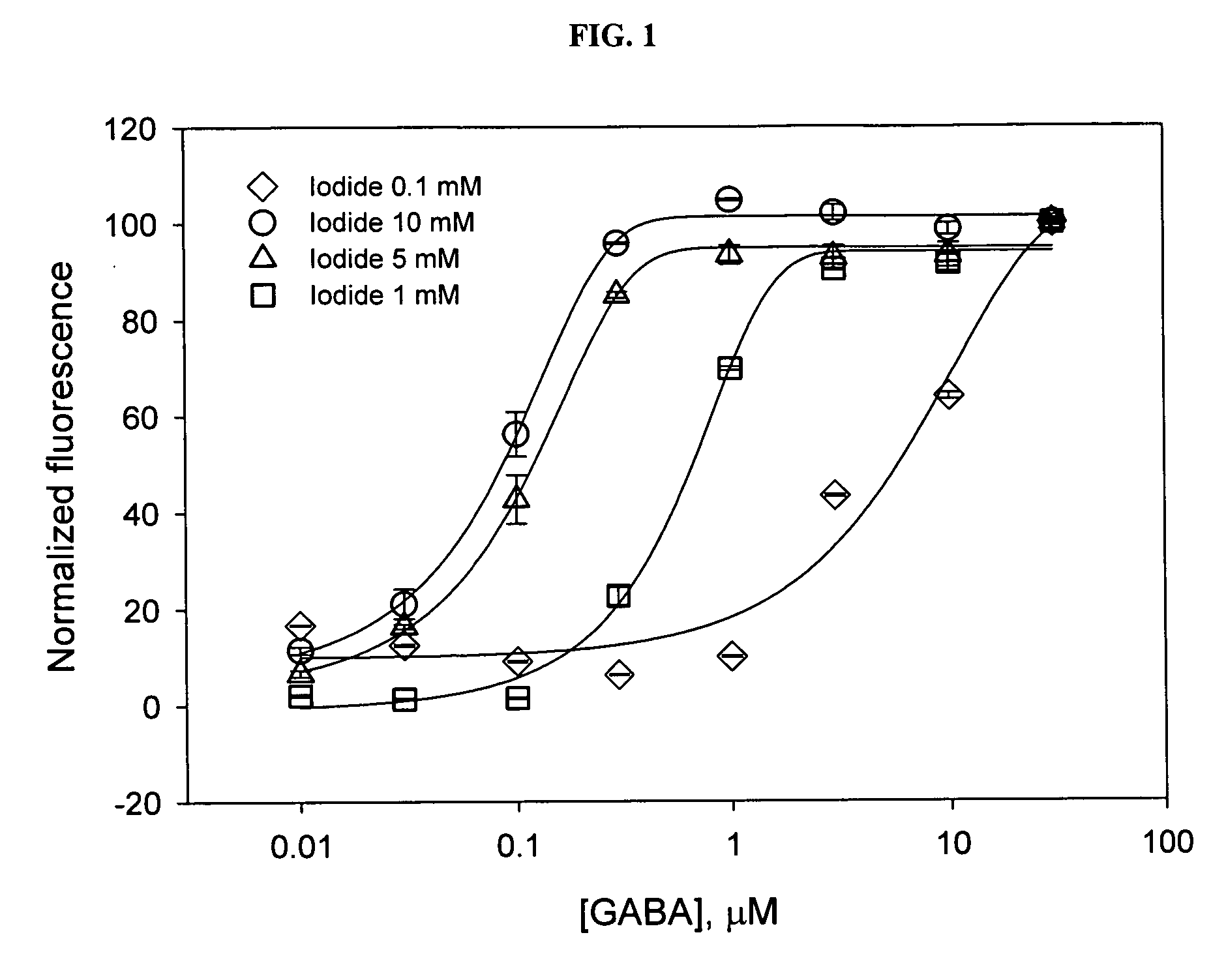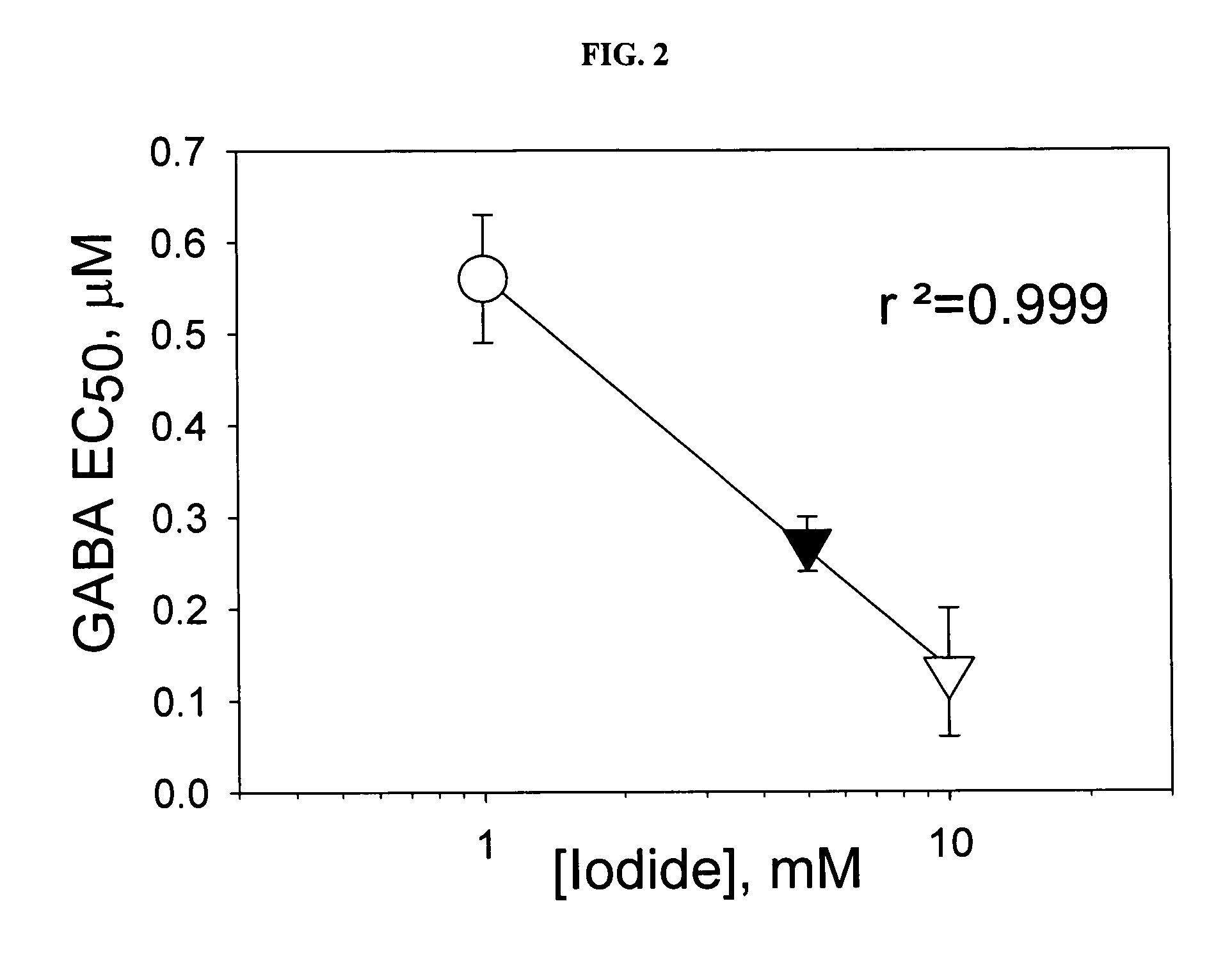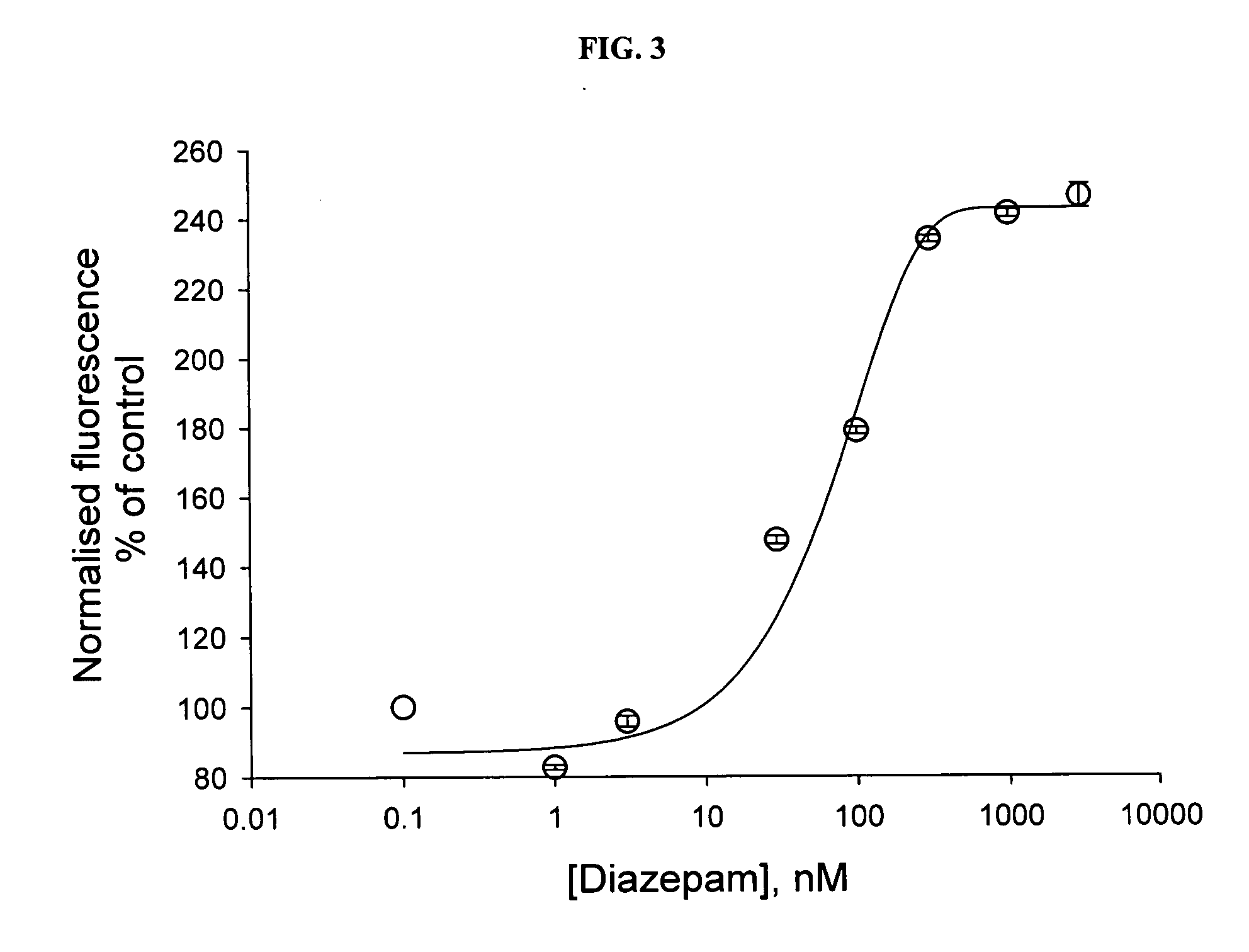Cell-based assay for the quantitative high throughput screening of gamma-aminobutyric acid-induced halide transport
- Summary
- Abstract
- Description
- Claims
- Application Information
AI Technical Summary
Benefits of technology
Problems solved by technology
Method used
Image
Examples
example 1
GABA-Induced Halide Transport Assay
[0036] The GABA-induced halide transport assay was optimized to minimize basal halide transport and to maximize the sensitivity. Chloride-free plating medium and chloride-free assay buffers (discussed above), were used to increase assay sensitivity by minimizing basal halide transport and increasing the signal-to-noise ratio. The signal was initiated by addition of the stimulus buffer containing iodide alone or with the agonist (GABA).
[0037] In the doubly-transfected cells, cultured on 384-well plates, iodide concentration of 1 -10 mM in the stimulus buffer yielded reproducible signal from well to well, and could reliably detect an activation of GABA-dependent halide transport produced by low concentrations of GABA (FIG. 1). An iodide concentration of 0.1 mM in the stimulus buffer did not generate a reproducible fluorescent signal below 3 μM of GABA, whereas 20 mM of iodide caused significant quenching of YFP fluorescence, independent of GABA con...
example 2
Testing of Known GABA Modulators
[0042] A number of known GABA(A) receptor modulators were tested in the assay, the results of which are shown in FIGS. 3, 4, and 5. The GABA-induced response was positively modulated by diazepam (EC50 32.2±8.7 nM, n=6 ), pentobarbital (EC50 36.95±19.1 μM, n=2); neurosteroid allopregnanolone (EC50 42.5±16.9 nM, n=2); and inhibited by the competitive antagonist bicuculline (IC50 4.7±0.9 μM, n=2).
[0043] The published data obtained from electrophysiological recordings indicate that α1-containing isoforms of the GABA(A) receptor in various expression systems exhibit EC50 values for diazepam in the range of 53-70 nM. In neuronal-like cell line NT-2 N, the EC50 for diazepam was 74 nM, 122nM in hippocampal granule cells. In the present invention, data obtained from electrophysiological recordings in HEK cells transiently expressing rat α1α2γ2 isoform showed an EC50 value of 10 nM (n=3-6 cells).
[0044]FIG. 3 reflects that Diazepam causes a concentration-depe...
PUM
| Property | Measurement | Unit |
|---|---|---|
| temperature | aaaaa | aaaaa |
| temperature | aaaaa | aaaaa |
| temperature | aaaaa | aaaaa |
Abstract
Description
Claims
Application Information
 Login to View More
Login to View More - R&D
- Intellectual Property
- Life Sciences
- Materials
- Tech Scout
- Unparalleled Data Quality
- Higher Quality Content
- 60% Fewer Hallucinations
Browse by: Latest US Patents, China's latest patents, Technical Efficacy Thesaurus, Application Domain, Technology Topic, Popular Technical Reports.
© 2025 PatSnap. All rights reserved.Legal|Privacy policy|Modern Slavery Act Transparency Statement|Sitemap|About US| Contact US: help@patsnap.com



